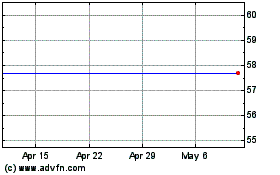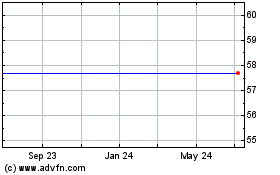In its weekly release,
Houston-based oilfield services company Baker Hughes
Inc. (BHI) reported a rise in the U.S. rig count (number
of rigs searching for oil and gas in the country). This can be
attributed to an increase in the tally of both oil and natural
gas-directed rigs. In particular, the natural gas rig count climbed
for only the third time in 2012, while the oil rig count scaled
another record high.
The Baker Hughes rig count, issued
since 1944, acts as an important yardstick for drilling contractors
such as Transocean Inc. (RIG), Diamond
Offshore (DO) , Noble Corp. (NE),
Nabors Industries (NBR ) , Patterson-UTI
Energy (PTEN ) ,
Helmerich & Payne (HP), etc. in gauging the
overall business environment of the oil and gas industry.
Analysis of the
Data
Weekly Summary:
Rigs engaged in exploration and production in the U.S. totaled
1,972 for the week ended April 20, 2012. This was up by 22 from the
previous week’s count and represents the fifth increase in the last
10 weeks.
The current nationwide rig count is
more than double that of the 6-year low of 876 (in the week ended
June 12, 2009) and significantly exceeds the prior-year level of
1,800. It rose to a 22-year high in 2008, peaking at 2,031 in the
weeks ending August 29 and September 12.
Rigs engaged in land operations
climbed by 19 to 1,904, inland waters activity increased by 1 to
23, while offshore drilling was up by 2 to 45 rigs.
Natural Gas Rig
Count: The natural gas rig count – which recently slumped
to a 10-year low – increased for just the second time in 15 weeks
to 631 (a gain of 7 rigs from the previous week). Despite the
weekly improvement, the number of gas-directed rigs is down
approximately 33% from its 2011 peak of 936, reached during
mid-October.
In fact, the current natural gas
rig count remains 61% below its all-time high of 1,606 reached in
late summer 2008. In the year-ago period, there were 878 active
natural gas rigs.
Oil Rig Count: The
oil rig count was up by 15 to 1,337. The current tally – the
highest since Baker Hughes started breaking up oil and natural gas
rig counts in 1987 – is way above the previous year’s rig count of
913. It has recovered strongly from a low of 179 in June 2009,
rising almost 7.5 times.
Miscellaneous Rig
Count: The miscellaneous rig count (primarily drilling for
geothermal energy) at 4 remained unchanged from the previous
week.
Rig Count by Type:
The number of vertical drilling rigs rose by 3 to 571, while the
horizontal/directional rig count (encompassing new drilling
technology that has the ability to drill and extract gas from dense
rock formations, also known as shale formations) was up by 19 at
1,401. In particular, horizontal rig units – that reached an
all-time high of 1,185 in January this year – increased by 10 from
last week’s level to 1,155.
To
Conclude
Notwithstanding the modest gain
registered by the natural gas drilling activity over the last week,
it is still down by 303 rigs (or 32%) from the recent highs of 934
in October 28.
Is this bullish for natural gas
fundamentals? The answer is "no," if we look at the U.S. production
and the shift in rig composition.
With horizontal rig count – the
technology responsible for the abundant gas drilling in domestic
shale basins – currently close to its all-time high, output from
these fields remains robust. As a result, gas inventories still
remain at elevated levels – up some 60% above the benchmark
five-year average levels.
Hamstrung by this huge surplus,
natural gas prices have dropped approximately 60% from 2011 peak of
$4.92 per million Btu (MMBtu) in June to the current level of
around $2.00 (referring to spot prices at the Henry Hub, the
benchmark supply point in Louisiana). Incidentally, prices hit a
31-month low of $1.85 during last week.
To make matters worse, a
near-record mild weather across most of the country curbed natural
gas demand for heating all winter, leading to an early beginning
for the stock-building season. The grossly oversupplied market
continues to pressure commodity prices in the backdrop of sustained
strong production
This has forced several natural gas
players to announce drilling/volume curtailments. Exploration and
production outfits like Ultra Petroleum Corp.
(UPL ) , Talisman
Energy Inc. (TLM) and Encana Corp.
(ECA) have all reduced
their 2012 capital budget to minimize investments in development
drilling.
On the other hand, Oklahoma-based
Chesapeake Energy Corp. (CHK) – the second-largest
U.S. producer of natural gas behind Exxon Mobil
Corp. (XOM ) – and rival explorer
ConocoPhillips (COP) have opted for
production shut-ins to cope with the weak environment for natural
gas that is likely to prevail during the year.
However, we feel these planned
reductions will not be enough to balance out the massive natural
gas supply/demand disparity, and therefore we do not expect much
upside in gas prices in the near term. In other words, there
appears no reason to believe that the supply overhang will subside
and natural gas will be out of the dumpster in 2012.
With natural gas unlikely to
witness a durable rebound in prices from their multi-year plight
and at the same time crude prices topping $100 a barrel, energy
producers are boosting liquids exploration to take advantage of
this trend. As a result of movement of rigs away from natural gas
towards oil, the tally of liquids-directed rigs has climbed to
another 25-year high.
BAKER-HUGHES (BHI): Free Stock Analysis Report
CHESAPEAKE ENGY (CHK): Free Stock Analysis Report
CONOCOPHILLIPS (COP): Free Stock Analysis Report
DIAMOND OFFSHOR (DO): Free Stock Analysis Report
ENCANA CORP (ECA): Free Stock Analysis Report
HELMERICH&PAYNE (HP): Free Stock Analysis Report
NABORS IND (NBR): Free Stock Analysis Report
NOBLE CORP (NE): Free Stock Analysis Report
PATTERSON-UTI (PTEN): Free Stock Analysis Report
TRANSOCEAN LTD (RIG): Free Stock Analysis Report
TALISMAN ENERGY (TLM): Free Stock Analysis Report
ULTRA PETRO CP (UPL): Free Stock Analysis Report
EXXON MOBIL CRP (XOM): Free Stock Analysis Report
To read this article on Zacks.com click here.
Zacks Investment Research
Baker Hughes (NYSE:BHI)
Historical Stock Chart
From Mar 2024 to Apr 2024

Baker Hughes (NYSE:BHI)
Historical Stock Chart
From Apr 2023 to Apr 2024
